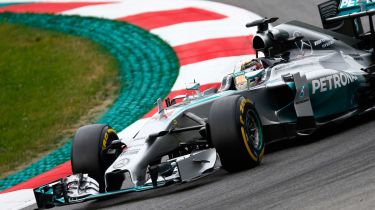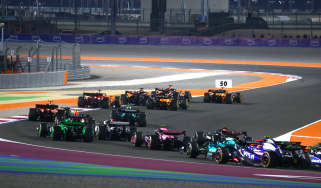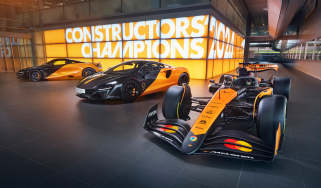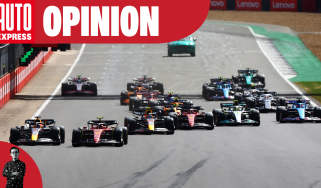British Grand Prix 2014 preview
We count down to this weekend’s British Grand Prix at Silverstone with an in-depth look at the race
It's that time of year, as Formula One returns to its spiritual home of Silverstone in Northamptonshire.
Following the previous race in Austria, the advantage lies with 2013 British Grand Prix victor Nico Rosberg as he and Mercedes team-mate Lewis Hamilton continue their in-house title battle.
But a strong showing from Williams in Austria that saw Felipe Massa back in pole position and Valtteri Bottas score his first podium suggests there could be another home favourite at the front.
Elsewhere, McLaren and Jenson Button have continued to disappoint, and it seems unlikely that the high-speed straights and corners of Silverstone will turn out to be a happy hunting ground for the 2009 champ this time.
Yet whoever you cheer for, you’re guaranteed not to be disappointed, as Silverstone is putting on a festival for fans to mark the 50th time it’s hosted a British GP. Parades of historic F1 cars driven by famous names such as Jackie Stewart, Dario Franchitti and Adrian Newey will be among the highlights of the weekend - be sure to check out our gallery (above) for some of the track's greatest moments over the years.
Interview: Paddy Lowe
Mercedes’ British executive director is eyeing more glory, and tells our man Ollie Kew how his team has mastered new rules
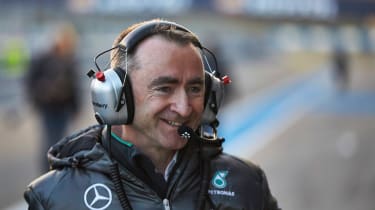
What’s the background to this year’s new engine regulations?
“They were initiated by (FIA president) Jean Todt. They’re no longer engine regulations, but power unit regulations. There’s an aerodynamic aspect as well, and the overall brief was efficiency.
“That’s the right direction, and the ideas came from the automotive industry, about what technology it needs to make road cars more efficient. Formula One is extremely good at converting effort into result – better than any other industry, because the motivation is so intense. The target is to turn that into something useful.”
Do you think that objective has been achieved so far?
“For a start, the cars are now massively more efficient. Last year, we loaded up with 155kg of fuel for a race; now we’re limited to 100kg, yet the cars are very nearly as fast and have more power. So we’re using 50 per cent less fuel to achieve the same result.
“I think it’s significant that our closest competitors aren’t Mercedes-powered. There was talk from Red Bull at the start of the season about if they had a Merc engine, they’d win everything. But we’ve proved they’re behind on the chassis – the Mercedes is a fantastic all-rounder.”
“The previous V8 was an engine well past its sell-by date, so the idea was to turn our efforts into something that’s useful to the world as a whole, not just F1, and make it road-relevant.
“Mercedes was very keen on that – Renault even went as far as to say it would pull out of the sport if the rules weren’t formed in this way.
“There have been a few detractors – particularly in recent months from teams that haven’t been winning – but they all backed it originally.”
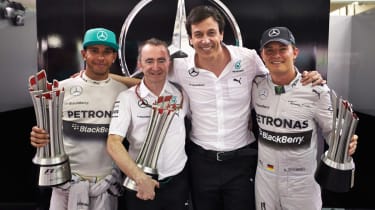
Do you agree with Red Bull designer Adrian Newey that the current rules are too restrictive?
“It’s not a prescriptive formula – in fact, there’s too much freedom. It’s ended up costing more than intended for everybody. The number of cylinders, their position, even the engine mounts are standardised, but they’re the areas that everyone agreed they wouldn’t normally focus development on.
“For example, if you left the number of cylinders unrestricted, then you have the ability to spend hundreds of millions of pounds creating a V6 programme and a V8 programme, just to see which is better, which is a pointless exercise. The easy stuff was pinned down, and all the areas where we want freedom, we have it.”
So how exactly will these efforts benefit road cars?
“The most fruitful benefits for road cars are having a turbocharged engine and a hybrid system that includes a battery and exhaust-heat recovery. Then there’s perception: getting customers used to hybrids and changing their views.
“There’s also the technical aspect. We push components to levels you’d never imagine. We consulted a lithium-ion battery manufacturer about an electrical solution that didn’t look right, because a battery that size and weight couldn’t be packaged in an F1 car.
“By pushing them, they developed a cell with better power density than even they thought possible. They beat their internal targets by a factor of 10. This is the kind of thing F1 can generate.”

TV coverage
If you haven’t managed to secure tickets, or just can’t make the trip to Northamptonshire this weekend, the good news is that viewers are spoiled for choice when it comes to TV coverage of the British Grand Prix, as both BBC and Sky Sports will be showing the race.
Friday’s free practice sessions take place at 10am and 2pm, while the third free practice is on Saturday morning at 10am. The all-important three-part knockout qualifying kicks off that afternoon at 12pm. Lights go out for the race start at 1pm on Sunday, and both BBC and Sky will be carrying extensive pre and post-race analysis and interviews as usual.
Silverstone: fast facts
Track history
Racing started at Silverstone in 1948, with a GP around the perimeter of the WWII airfield. From 1955, the British GP alternated with Aintree on Merseyside, then from 1963 to 1987 the race was shared with Brands Hatch, Kent. Since then, Silverstone has been F1’s permanent UK home.
The corners
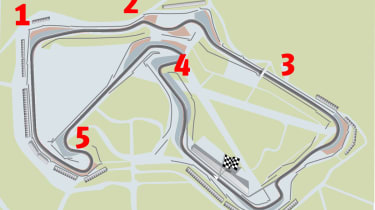
1. Maximum G-force: Copse
Drivers have to push against five times their body weight when driving through this 180mph, seventh-gear right-hander. It provides fans with one of the clearest demonstrations of a modern Formula 1 car’s incredible aerodynamic grip.
2. Fastest corner: Maggots
Maggots and Becketts corners form a challenging left-right-left sequence that’s entered at around 185mph. You’ll scarcely believe how quickly the drivers flick the cars through this narrow and twisty section before hangar straight.
3. Top speed: hangar straight
The cars should be brushing 190mph down this flat-out blast in the dry, making braking for the sweeping right-hander that follows (Stowe) tricky. This was the scene of Mansell’s famous pass on Nelson Piquet in 1987.
4 & 5. Overtaking: Arena & Brooklands corners
Both of these corners allow brave late-brakers to swoop past their rivals on the inside. But watch out for sneaky repasses exiting arena.
Previous British GP winners
2013: Nico Rosberg, Mercedes2012: Mark Webber, Red Bull2011: Fernando Alonso, Ferrari2010: Mark Webber, Red Bull2009: Sebastian Vettel, Red Bull2008: Lewis Hamilton, McLaren2007: Kimi Raikkonen, Ferrari2006: Fernando Alonso, Renault2005: Juan Pablo Montoya, Williams2004: Michael Schumacher, Ferrari2003: Rubens Barrichello, Ferrari2002: Michael Schumacher, Ferrari
Find a car with the experts

